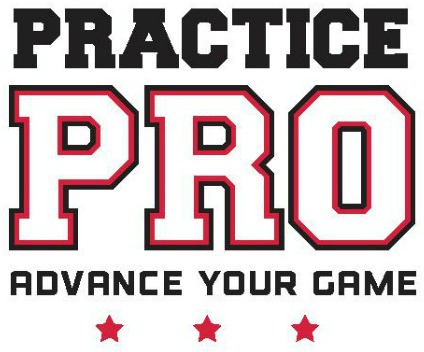What the Best Pitchers Do Under Pressure (and You Should Too)
/Once the season starts, everything shifts.
The intensity ramps up, the stakes get higher, and the margin for error shrinks. What worked during the offseason doesn’t always translate directly into game-day performance unless practices are adjusted to mirror real play. At Practice Pro, we believe that what happens in training should reflect the demands of competition. That means, when you're in-season, your practice environment has to look, feel, and challenge you like the game itself.
Drills and reps still matter—but now more than ever, how you practice matters just as much as what you practice.
So how do you create game-like situations during practice? Here are some ways to make each session more intentional, competitive, and connected to what athletes will actually face on in the circle.
1. Put Hitters in the Box
For pitchers especially, one of the easiest and most powerful shifts is simply adding a live hitter to a practice session. Even if the hitter isn’t swinging, the presence alone changes the mental approach. Pitchers must adjust their eye focus, deal with distraction, and execute with intent. It simulates game tension and helps pitchers learn how their pitches look and move against a real opponent—not just a target. Catchers, wear equipment when catching with an obstacle in front of you or in the box, or else it will bounce off and hit you!
Want to take it a step further? Have hitters take real at-bats. Let pitchers work on sequencing, pitch selection, and count management while learning to read a hitter’s body language and tendencies. And just like in the game—don’t stop the action after every pitch. Let it flow then analyze after. Repeat this process a few times in practice and you’ll see improvement over the session.
2. Add Pressure with Consequences
Games have consequences. Outcomes matter. That’s what makes them exciting—and stressful. Your practices should tap into that same energy.
Try this: set up a situation where your pitcher has to get three outs before giving up a run. Or give them five pitches to execute a specific sequence (rise, drop, change, etc.) with command. If they succeed, they “win” the round. If not, there’s a consequence—extra core work, one less pitch in their next bullpen, or losing a team competition.
It doesn’t need to be harsh—it just needs to matter. Creating that pressure in practice builds focus and resilience for real game moments.
3. Incorporate Game-Speed Timelines
How long does your pitcher take between pitches in the bullpen? How long does a hitter stand in before they get ready?
In a game, everything is on a clock—even if unofficially. Create rhythm and urgency by introducing game-speed timelines. Use a timer between pitches. Have players respond quickly to a simulated sign. Practice transitions between pitches or batters, just like in real innings.
For pitchers, this is critical. Working too slowly or without urgency in training can lead to game-day pacing issues and loss of rhythm under pressure.
4. Use Situational Scenarios
This is where practice becomes a mental game too. Set up real situations on the field:
Runner on 2nd, 1 out—what pitch are you throwing?
3-1 count to the cleanup hitter—are you going at her or working around her?
Full count, bases loaded, game tied.
Have pitchers (and fielders) talk through the situation before the rep, then execute it. These “mental reps” are just as important as the physical ones and prepare players to think clearly and confidently when it matters most.
5. Track Outcomes, Not Just Execution
In the offseason, the goal is often mechanical: Did she resist? Did the spin look right?
In-season, shift the focus to outcomes. Did that pitch generate a swing and miss? A weak grounder? Did it move as intended in a game-like scenario? Was it competitive in a hitter’s count?
Keeping score matters now. Track how many quality innings or strikeouts your pitcher gets in practice games. Chart pitch effectiveness by outcome, not just form. Give players a reason to care about every rep.
6. Play Short, Competitive Games in Practice
Sometimes, the best way to prepare for a game is... to play one.
Scrimmage. Use modified innings. Set up 1-inning challenges: offense vs. defense, live at-bats, winner gets out of conditioning. These mini-games keep the energy high, simulate pressure, and keep athletes tuned in without wearing them down physically.
Even short 10-minute competitions with a scoreboard and teammates watching can bring out the urgency and focus you want to see on game day.
7. Let Them Fail (So They Learn to Recover)
In-season practice is not the time to avoid mistakes. It’s the time to learn how to recover from them.
Game-like training should include adversity. Missed spots. Big hits. Walks. Have pitchers throw out of jams in practice. Put them in 1st and 3rd situations or a bases-loaded count with no outs. Then coach them through it—not by rescuing them, but by helping them build their own process to stay composed, make the next pitch, and compete.
That’s how they grow into mentally strong pitchers who can lead under pressure.
Final Thoughts
As the season unfolds, every rep should bring your players closer to game-day readiness. That means shifting your practices to mimic the speed, intensity, and unpredictability of real competition.
We don’t rise to the level of our potential—we fall to the level of our preparation. So if you want your pitchers to be better in games, bring the game into practice. Train their mind and body the way they’ll be tested.
Because when practice feels like the game, the game feels like home.


